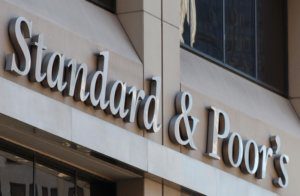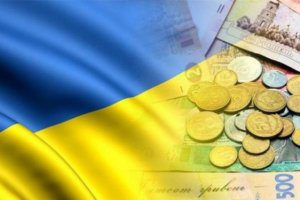
Ukraine’s GDP in January-March 2018 grew by 3.1% year-over-year, the State Statistics Service of Ukraine reported. The country’s economy grew by 0.9% compared with the previous quarter. As reported, the World Bank left unchanged the forecast for the growth of Ukraine’s GPD in 2018-2019 at the level of 3.5% and 4% respectively. At the same time, the World Bank warned that the forecast for 2018 envisages the implementation of deferred reforms by the country. If they are not implemented, economic growth may slow down to almost 2%.
The IMF retained the forecast for GDP growth in Ukraine in 2018 at 3.2%, while at the same time worsened it for 2019 to 3.3% from 4%.
The NBU predicts the acceleration of GDP growth in 2018 to 3.4% from 2.5% in 2017, a slowdown in 2019-2020 up to 2.9%.
The European Bank for Reconstruction and Development left unchanged the forecast for the growth of the Ukrainian economy in 2018 at the level of 3% and expects the corresponding growth rate would be maintained in 2019.

S&P Global Ratings forecasts that growth in Ukraine is set to accelerate further to 3.1% in 2018, and through to 2021, the agency expects average real GDP growth of about 2.9%, S&P said in a report affirming the country’s ratings issued on April 20. In the previous report dated November 10, 2017, S&P expected that GDP this year would grow by 2.6% with the acceleration to 3% and 3.2% in 2019 and 2020 respectively. S&P said that economic recovery continues to be driven by strengthening domestic demand, high commodity prices, and the economy’s ability to quickly adapt to the Donbas trade blockade. Growth drivers in the Ukrainian economy will remain broadly unchanged, with domestic demand as the main contributor.
Notwithstanding macroeconomic improvements, Ukrainian per capita wealth levels remain low.
“Despite two consecutive years of growth, per capita GDP ($2,600 in 2017) is still only at 67% of its pre-crisis wealth levels in 2013 and the second-lowest in Europe and the Commonwealth of Independent States after Tajikistan,” S&P said.
According to S&P, low income levels also explain high levels of net emigration. Over one million Ukrainians worked in Poland last year, with several hundreds of thousands in other neighboring countries.
“There are reports that this has caused shortages of qualified labor in western Ukraine, for instance, where a successful automotive industry cluster has been established over the past few years,” S&P said.
S&P also reviewed expectations for the hryvhia exchange rate for year-end: from UAH 27.3/$1 to UAH 29.5/$1. In addition, if earlier the agency expected that at the end of 2019 and 2020 the hryvnia exchange rate would remain stable at UAH 27.5/$1, now it expects that it would weaken by the end of next year to UAH 30.5/$1 with further strengthening to UAH 29.8/$1 by the end of 2020 and UAH 28.8/$1 by the end of 2021.
“Over our 2018-2021 forecast horizon, we still expect slightly higher current account deficits averaging 2.7% of GDP. Strong import demand–due to the domestically driven economy, volatile commodity prices, and risks to external trade from rising protectionism–could underpin these higher deficits,” S&P said.
As for inflation, the agency slightly worsened it for 2018 – from 8.7% to 8.9%, and improved for 2019 and 2020 – from 8% and 7.5% to 7.5% and 7% respectively.
“Given our forecast of continued deprecation pressures on the Ukrainian hryvnia, which pushes up import prices and inflationary pressures, especially from food prices, we forecast that inflationary pressures will persist over the medium term, though inflation will move closer to the NBU’s target of 6% plus/minus 2% in 2018,” the S&P analysts said.
S&P pointed out efforts of the NBU to curb inflation: the NBU continues to fight inflation, with four successive key policy rate hikes to 17% over the past six months.
Ukrainian exporters frequently hit export quotas early in the year. Moreover, meat exports, especially poultry, to the EU have an inflationary impact complicating the NBU’s task of reducing price inflation within its target band, S&P said.

The growth of real GDP of Ukraine in the first quarter of 2018 in annual terms (quarter-over-quarter) was 2.3%, according to the assessments of the National Bank of Ukraine (NBU). The growth was thanks to the further increase in population income and retaining the favorable situation on foreign markets.
“An additional factor was the reduction in the comparison base of last year under the influence of the trade blockade of uncontrolled areas last year, the full effect from which is expected from the second quarter,” the central bank said in its inflation report released on Friday night.
At the same time, the NBU points out that the worsening of weather conditions at the end of February and in March somewhat inhibited the revival of economic activity, particularly in transport and construction.
According to the central bank, domestic demand remained the main factor of economic growth. Private consumption supported further increases in salaries and social standards, including an increase in pensions at the end of last year and a minimum wage from the beginning of 2018, as well as improving consumer expectations of households.
“The acceleration in the growth of production of machine-building products, in particular automobile and railway, was the indicator of the further growth,” the NBU said.
The central bank said that in January-February 2018, exports continued to grow, mainly thanks to the increase in the supply of some food products, wood and products made from it, as well as ferrous metals. At the same time, consumer imports were growing at a rapid pace, contributing to the change in GDP.

The World Bank has kept the forecast for Ukraine’s GDP growth in 2018 at 3.5%, Lead Economist and Program Leader covering Belarus, Moldova and Ukraine Faruk Khan said in Kyiv on Tuesday.
“Economic growth is projected at 3.5% in 2018 if pending reforms in anticorruption, land markets, state-owned banks, and privatization can be advanced in the next few months. This would provide an important signal to investors. If reforms are delayed, growth could drop below current levels in an uncertain macroeconomic environment as financing risks rapidly increase,” the World Bank said in a press release.
According to the World Bank’s economic update for Ukraine, the growth outlook has become more uncertain, but safeguarding macroeconomic stability and completing key pending reforms by July 2018 to bolster investor confidence can help boost growth in the next two years.
“The complex political environment ahead of the 2019 elections is affecting reform prospects, but a window of opportunity exists to complete key reforms by July 2018. Reforms in land markets, the financial sector, anticorruption, and privatization would not only address medium-term growth bottlenecks, but also provide an important immediate signal to strengthen investor confidence,” the World Bank said.
The World Bank’s experts said that addressing macroeconomic vulnerabilities and containing inflationary pressures to reduce cost of funds for the private sector is also important to strengthen investor confidence. Under such a scenario with continued improvements in investor confidence, economic growth could improve to 3.5% in 2018 and 4% in 2019, with fixed investment growing by about 15%.